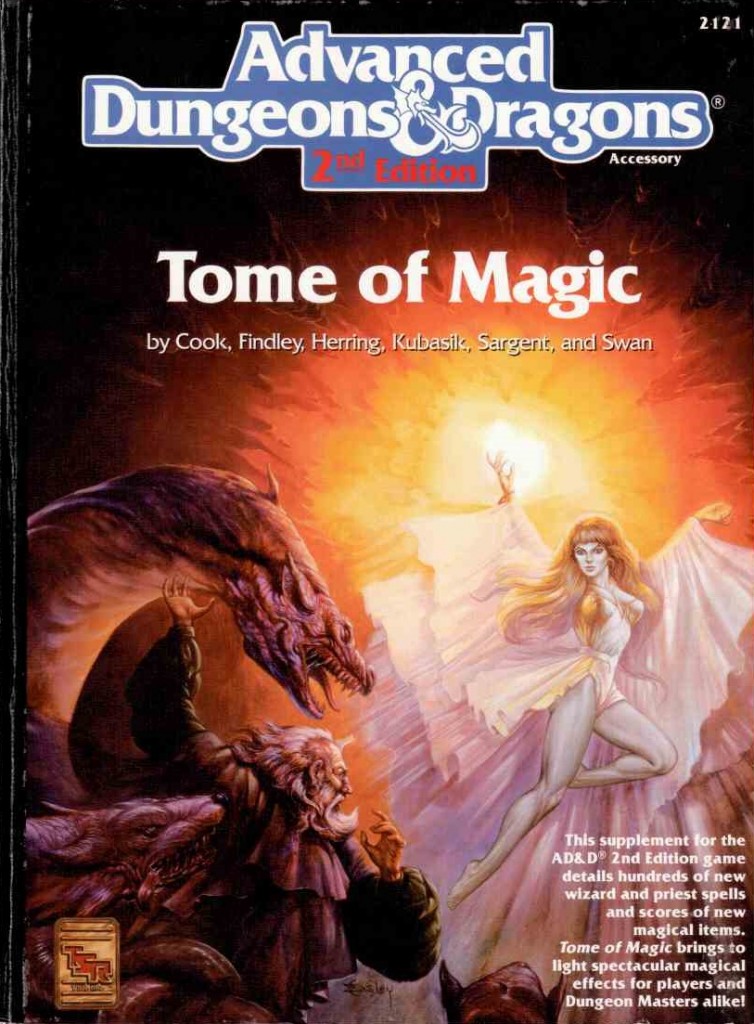It is all too easy, and far too tempting, to distill the essence of spells down to their raw numeric components, and doubly so in D&D where all too often numbers are given more importance than the words which surround them.
For example, much is made of the theory that a given spell of level X should have a range no greater than Y and do damage of Z unless it’s an area effect spell in which case Z should be lowered to compensate for the increased number of targets. Add in a fixed level-based Difficulty Class (let’s call it J, just for kicks) and spells cease to be magical and more akin to a fifth-grade textbook exercise. And where’s the magic in that?
While there does have to be, I’ll concede, a certain amount of balance in the game to ensure that there is no One Spell To Nuke Them All, balance and behind-the-scenes formulae shouldn’t get in the way of making spell-casting feel sufficiently magical. D&D should offer a world of wonder and miracles, not one of numerically balanced outcomes and mere statistical probabilities.
One of the great things about D&D Next is that you can bring back all of those old AD&D books (you know, the ones you almost put on eBay so many times in the past) and use them right in the game with very little conversion or preparation. When it comes to spell-casting, the king of them all has to be Tome of Magic.
This is the book which truly puts the magical back into magic with hundreds of new spells and magic items than you can shake a wizards’ staff at. Along with the Wild Mage option (which would make a perfect option as a Wizard Tradition in D&D Next) there’s also a metric tonne of new Priest Spheres, that could be added to a Cleric’s list to tailor a Deity’s unique spell list according to their sphere of interest. For example a Deity who is (in D&D Next terminology) a Lifegiver could also grant access to spells from the Sphere of Wards while a Stormcaller Cleric have access to the Sphere of Chaos.
One option in D&D Next is to create your own Deity with a portfolio of their very own. With Tome of Magic by your side, you certainly won’t be short of ideas.
But back to the spells themselves. My personal favourite (and there’s oh so many to choose from) is the 4th level Priest spell Solipism. This is an Illusion spell from the Sphere of Thought which creates an illusion which is real and exists in every way, but only if you believe it. Only the caster believes it automatically, and everyone else has to roll to believe it (the opposite to how Illusions normally work).
The example given is that a Cleric can cast Solipism to create an illusory bridge across a chasm and run across it. Anyone else who believes it can also cross, but woe to those who fail their rolls half-way across……..
I have known PCs use this one spell in wonderful and enchanting ways through the years, from creating a cartoon style hole in a wall and running through (and hearing the Orcs splat against solid rock when they try to charge through) to one Cleric who survived being thrown into prison for a year and a day by eating solipistic food while he was incarcerated (he had a gem implanted in his forehead which would conjour spell components once per day, but that’s another story).
Is it a balanced spell in a modern gamer’s eyes? Who cares? It’s a bloody great fun spell which is chock-full of role-playing potential, and that trumps all possibility for “abuse” in my eyes. Besides, the wonderful thing about spells is that the gods (not to mention the laws of magic themselves) are fickle at best. Spell can fail and it’s left to the PC to find out why. That’s how side-quests are born.
If you play D&D Next (and you should. It’s great, even with the playtest rough edges), I highly recommend dusting down your old copy of Tome of Magic, or snagging a copy if you don’t have one. You won’t regret it.
Put some magic back into your spell-casting today!





I love that book! Does this post mean you’ll let me use it in your game? ;)
Yep! :D
Excellent! *digs out copy*
You know I loved that book but I never got the chance to use it in a game. I remember in particular that the art was gorgeous and wild magic looked like a lot of fun. The Warp Marble in the back also captured my imagination. Having never used it, I take comfort that it went to a good gamer home during a book purge a few years ago.